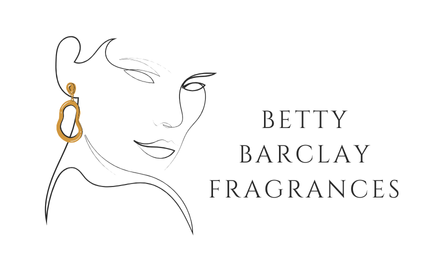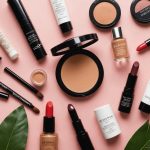Mastering Primer Application: The Ultimate Guide for Oily Skin in Humid UK Weather
When it comes to achieving a flawless makeup look, especially in the humid UK weather, using the right primer is crucial, especially for those with oily skin. Here’s a comprehensive guide to help you master the art of primer application and keep your skin looking its best.
Understanding Your Skin Type
Before diving into the world of primers, it’s essential to understand your skin type. Oily skin is characterized by an overproduction of sebum, which can lead to a shiny appearance and increased pores. In humid weather, this can exacerbate, making your skin look greasier and more prone to breakouts.
Also to see : Exploring the Trendiest Eco-Friendly Materials in Women”s Fashion: A Guide to Recycled Choices in the UK
Why Oily Skin Needs a Primer
A primer serves as a barrier between your skin and your makeup, helping to control oil production, reduce the appearance of pores, and extend the wear of your makeup. Here are some key reasons why oily skin benefits from a primer:
- Oil Control: A good primer can help absorb excess oil, keeping your skin looking matte for longer.
- Pore Minimization: By filling in pores, a primer creates a smoother canvas for makeup.
- Longer Makeup Wear: A primer helps your makeup stay in place, even in humid conditions.
Choosing the Right Primer
With so many primers on the market, choosing the right one can be overwhelming. Here are some tips to help you select the best primer for your oily skin:
Additional reading : Ultimate Guide to Protecting Leather Shoes from the UK”s Damp Weather
Key Ingredients to Look For
When shopping for a primer, look for ingredients that are known to benefit oily skin:
- Salicylic Acid: Helps to unclog pores and reduce acne.
- Hyaluronic Acid: Although it might seem counterintuitive, hyaluronic acid can help balance oil production and keep your skin hydrated without feeling greasy.
- Glycolic Acid: Exfoliates the skin, helping to reduce the appearance of fine lines and pores.
- Silica: Absorbs oil and helps to mattify the skin.
Types of Primers
Here are some common types of primers and how they can benefit oily skin:
-
Water-Based Primers
-
Lightweight and non-greasy.
-
Ideal for hot and humid weather.
-
Example: Charlotte Tilbury Wonderglow Face Primer.
-
Silicone-Based Primers
-
Provide a smooth, even surface.
-
Can help fill in pores.
-
Example: Smashbox Photo Finish Foundation Primer.
-
Mineral Primers
-
Often contain natural ingredients like silica.
-
Can help absorb oil.
-
Example: BareMinerals Prime Time Original Primer.
How to Apply Primer
Applying primer is an art that requires some technique to get it just right. Here’s a step-by-step guide on how to apply primer for oily skin:
Step-by-Step Application Guide
- Prep Your Skin
- Ensure your skin is clean and moisturized. For oily skin, use a lightweight, oil-free moisturizer.
- Allow your moisturizer to absorb fully before applying the primer.
- Apply a Small Amount
- Use a small amount of primer, about the size of a pea.
- This will help prevent clogging your pores and reduce the risk of a greasy look.
- Focus on Key Areas
- Apply the primer to areas where you tend to get oily, such as the T-zone (forehead, nose, and chin).
- Gently blend the primer into your skin using your fingertips or a beauty blender.
- Allow It to Set
- Let the primer set for about 30 seconds to a minute before applying your foundation.
- This allows the primer to fully absorb and prepare your skin for makeup.
Expert Tips for Oily Skin
Here are some expert tips to help you get the most out of your primer and keep your oily skin under control:
Use the Right Tools
- Beauty Blender: Helps to blend the primer seamlessly into your skin.
- Primer Brush: Can be used for more precise application, especially around the eyes and mouth.
Set Your Makeup
- After applying your foundation, set it with a setting spray to extend the wear of your makeup.
- Example: Urban Decay All Nighter Setting Spray.
Keep It Natural
- Opt for natural, oil-free products to avoid exacerbating oily skin.
- Example: Look for products labeled “non-comedogenic” or “oil-free.”
Common Mistakes to Avoid
When using a primer, there are several common mistakes to avoid to ensure you get the best results:
Overapplying Primer
- Using too much primer can lead to a greasy look and clogged pores.
- Start with a small amount and build up as needed.
Not Allowing Primer to Set
- Applying foundation too quickly after primer can disrupt the primer’s ability to set properly.
- Wait at least 30 seconds to a minute before applying foundation.
Using the Wrong Primer
- Using a primer that is not suited for oily skin can worsen oil production and pores.
- Always read the ingredient list and look for reviews from others with similar skin types.
Product Comparison Table
Here’s a comparison table of some popular primers suitable for oily skin:
| Primer | Key Ingredients | Type | Benefits |
|---|---|---|---|
| Charlotte Tilbury Wonderglow | Hyaluronic Acid, Peptides | Water-Based | Hydrates, smooths skin, reduces fine lines |
| Smashbox Photo Finish | Silicone | Silicone-Based | Smooths skin, fills pores, long-lasting |
| BareMinerals Prime Time Original | Silica, Vitamin E | Mineral | Absorbs oil, natural ingredients, non-comedogenic |
| NYX Pore Filler | Salicylic Acid, Tea Tree Oil | Water-Based | Reduces pores, controls oil, acne-fighting properties |
| Urban Decay Optical Illusion | Hyaluronic Acid, Glycolic Acid | Water-Based | Hydrates, exfoliates, reduces fine lines |
Detailed Bullet Point List: Ingredients to Avoid
When choosing a primer for oily skin, there are certain ingredients you should avoid to prevent exacerbating oil production and pores:
- Mineral Oil: Can clog pores and increase oil production.
- Petroleum Jelly: Greasy and can worsen oily skin.
- Coconut Oil: While beneficial for dry skin, coconut oil can be too rich for oily skin.
- Fragrances: Can irritate the skin and cause breakouts.
- Comedogenic Ingredients: Ingredients that are known to clog pores, such as isopropyl myristate and lanolin.
Practical Insights and Actionable Advice
Here are some practical tips and advice to help you master primer application and maintain healthy, beautiful skin:
Skincare Routine
- Morning Routine: Start with a gentle cleanser, followed by a lightweight moisturizer, and then your primer.
- Night Routine: Use a cleanser to remove makeup, followed by a toner and a moisturizer.
Hair and Skin Connection
- Hair Oil: Using hair oil can sometimes transfer to your face, exacerbating oily skin. Use a light hair oil or apply it only to the ends of your hair.
- Hair Dryer: Avoid using a hair dryer too close to your face as it can increase oil production.
Seasonal Adjustments
- Winter Skincare: In colder months, you may need a slightly richer moisturizer but still opt for a lightweight primer.
- Summer Skincare: In hotter months, stick to water-based products and light, oil-free moisturizers.
Quotes from Experts
Here are some quotes from beauty experts that highlight the importance of primer for oily skin:
- “A good primer is like a magic trick for your skin. It helps your makeup stay in place all day and controls oil production, making it a must-have for oily skin.” – Charlotte Tilbury, Celebrity Makeup Artist.
- “For oily skin, it’s crucial to choose a primer that is lightweight and oil-free. Look for ingredients like salicylic acid and hyaluronic acid to help balance your skin.” – Dr. Joshua Zeichner, Dermatologist.
Mastering primer application is a key step in achieving a flawless makeup look, especially for those with oily skin in humid weather. By understanding your skin type, choosing the right primer, and applying it correctly, you can keep your skin looking its best all day long. Remember to avoid common mistakes, use the right tools, and adjust your skincare routine seasonally to get the most out of your primer.
Whether you’re a beauty novice or an experienced makeup enthusiast, the right primer can make all the difference in your skincare and beauty routine. So, take the time to read beauty reviews, experiment with different products, and find what works best for you. With the right primer, you’ll be on your way to a more natural, beautiful look that lasts all day.










